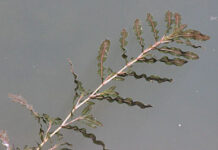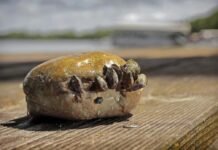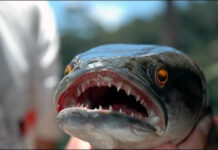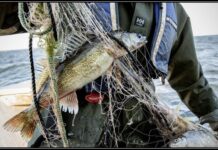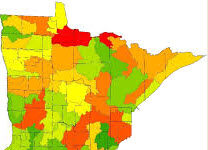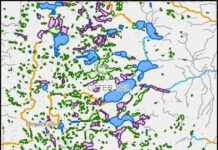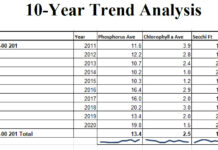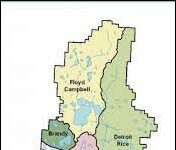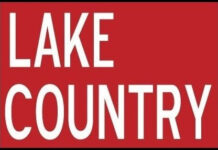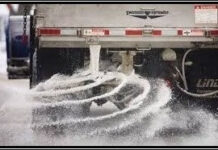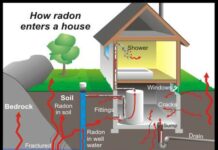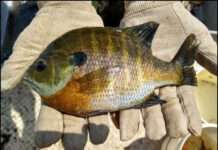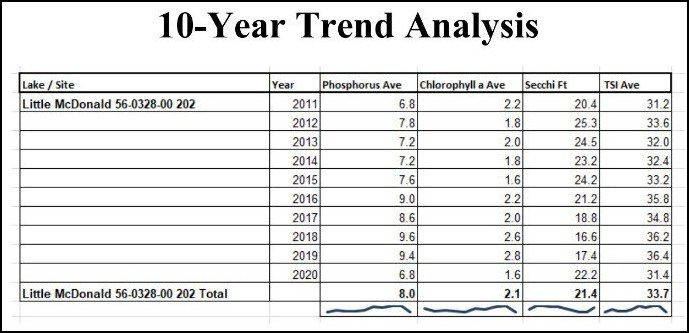Trophic (pronounced TROH-fik) means “of or relating to nutrition.” The Trophic State Index (TSI) is a classification system designed to “rate” individual lakes, ponds and reservoirs based on the amount of biological productivity occurring in the water. Using the index, one can gain a quick idea about how productive a lake is. Classifications range from 1 to 100 and are generally described as follows:
- Lakes (water bodies classified as lakes, ponds or reservoirs) with TSI values below 30 are considered to have scant nutrients and be minimally productive; they would be good areas for water sports and good sources for drinking water. These lakes exhibit clear water with good visibility but may not provide the necessary nutrients and algae to maintain a healthy environment for fish and wildlife.
- Lakes with TSI values ranging between 30 and 45 are considered to have a mid-range of nutrients and are reasonably productive; they have an adequate amount of nutrients and generally support a fair amount of algae, aquatic plants, birds, fish, insects and other wildlife.
- Lakes with TSI values ranging between 46 and 70 are considered to be waterbodies with good or sufficient nutrients and have fairly high productivity; they have a greater amount of nutrients and are able to support an abundance of algae, aquatic plants, birds, fish, insects and other wildlife.
- Lakes with TSI values ranging between 71 and 100 are considered to be waterbodies with an overabundance of nutrients and are the most productive trophic class of lakes. Because they have the highest nutrient concentrations, these waterbodies have the potential to support the highest level of biological productivity (e.g., an abundance of algae, aquatic plants, birds, fish, insects, and other wildlife.) These waterbodies have the greatest potential for widely ranging dissolved oxygen conditions, which can have a detrimental effect on native plants and animals.
TSI is determined from water chemistry samples and the Secchi depth measurement, a measure of water. The water chemistry samples must be analyzed for one (or more) of the following water chemistry parameters: total nitrogen, total phosphorus, and/or chlorophyll-a. Ideally, monitoring should occur monthly for a period of at least two years prior to determining a TSI.
The Trophic State Index is one of several methods used to describe the biological productivity of a waterbody. Two scientists, Forsberg and Ryding, 1980, developed another method that is widely used. It is known as the Trophic State Classification System. Using this method, waterbodies can be grouped into one of four categories, called trophic states:
Oligotrophic (oh-lig-oh-TROH-fik) where waterbodies have the lowest level of productivity;
Mesotrophic (mees-oh-TROH-fik) where waterbodies have a moderate level of biological productivity;
Eutrophic (you-TROH-fik) where waterbodies have a high level of biological productivity;
Hypereutrophic (HI-per-you-TROH-fik) where waterbodies have the highest level of biological productivity. The trophic state of a waterbody can also affect its use or perceived utility. Figure 1 illustrates this concept.
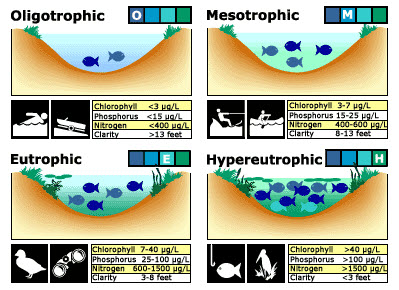
| TSI | Chl-a(ug/L) | SD (ft) | TP (ug/L) | Attributes | Fisheries & Recreation |
| <30 | <0.95 | >26.2 | <6 | Oligotrophy: Clear water, oxygen throughout the year at the bottom of the lake, very deep cold water. | Trout fisheries dominate |
| 30-40 | 0.95-2.6 | 13.1-26.2 | 6-12 | Bottom of shallower lakes may become anoxic (no oxygen). | Trout fisheries in deep lakes only. Walleye, Tullibee present. |
| 40-50 | 2.6-7.3 | 6.6-13.1 | 12-24 | Mesotrophy: Water moderately clear most of the summer. May be “greener” in late summer. | No oxygen at the bottom of the lake results in loss of trout. Walleye may predominate. |
| 50-60 | 7.3-20 | 3.3-6.6 | 24-48 | Eutrophy: Algae and aquatic plant problems possible. “Green” water most of the year. | Warm-water fisheries only. Bass may dominate. |
| 60-70 | 20-56 | 1.6-3.3 | 48-96 | Blue-green algae dominate, algal scums and aquatic plant problems. | Dense algae and aquatic plants. Low water clarity may discourage swimming and boating. |
| 70-80 | 56-155 | 0.8-1.6 | 96-192 | Hypereutrophy: (light limited productivity). Dense algae and macrophytes. | Water is not suitable for recreation. |
| >80 | >155 | <0.8 | 192-384 | Algal scums, few aquatic plants | Rough fish (carp) dominate; summer fish kills possible |
John Kruse [email protected]

